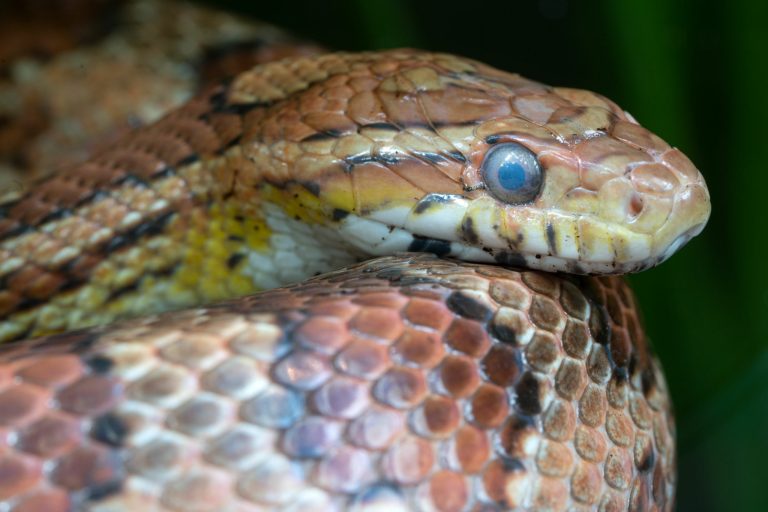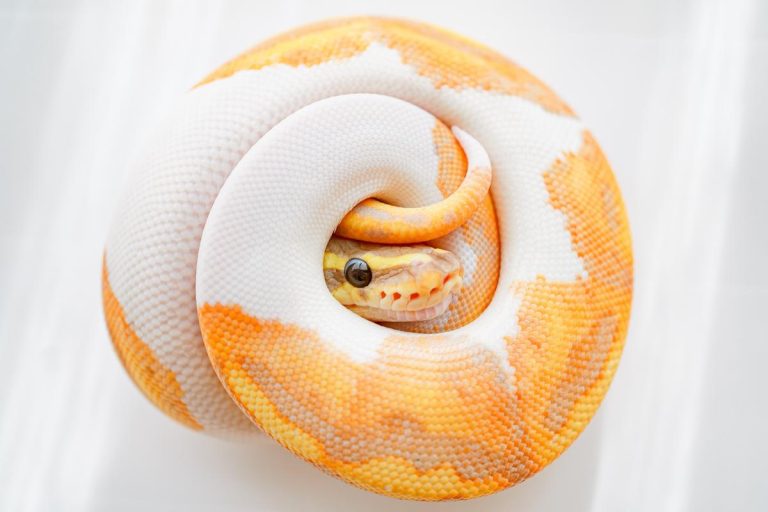Palmetto Corn Snake: 5 Things You Should Know Before Buying One
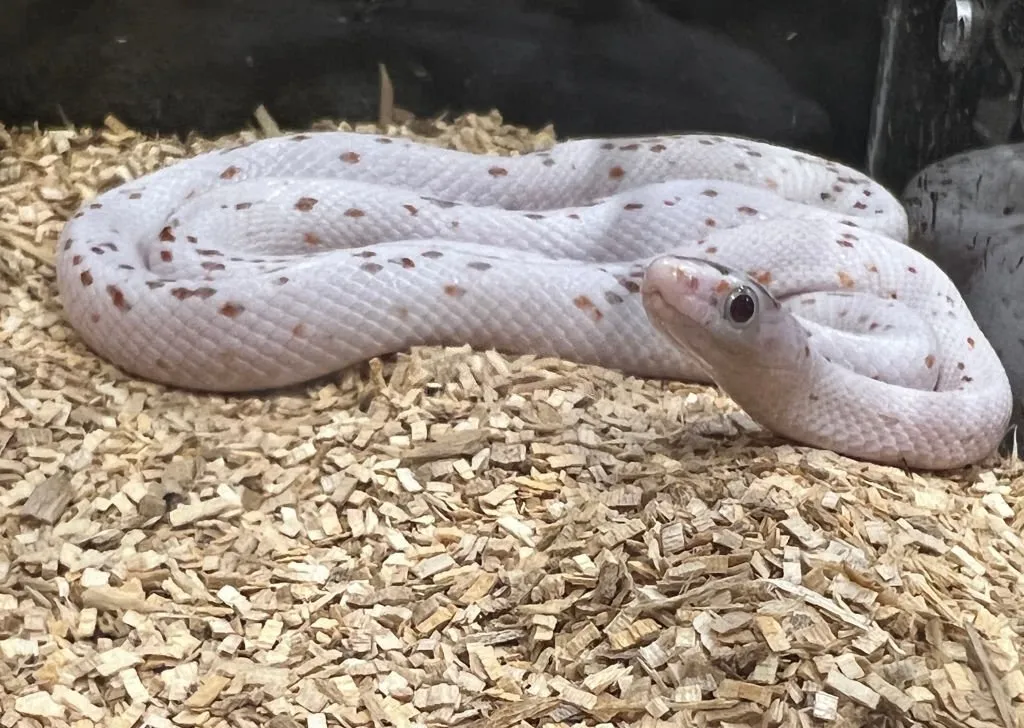
Table of Contents
Palmetto Corn Snake: Everything You Need to Know
The Palmetto corn snake is a beautiful, docile snake that makes a great pet for beginner and experienced snake owners alike. With their gentle demeanor, modest size, and easy care requirements, these snakes have grown in popularity over the years. Here is a comprehensive guide to everything you need to know about the Palmetto corn snake.
Physical Characteristics
The Palmetto corn snake has a slender body with smooth scales. They are relatively small, growing 2 to 4 feet long as adults. Their base color is tan, orange, or reddish-brown with bold dark saddles running down the back and sides. The saddles have black edges with white centers which creates a stunning high-contrast look. The belly is checkered black and white. The head is reddish-brown and the eyes are round black pupils.
These non-venomous constrictors have a docile nature and rarely bite. When threatened, they may vibrate their tails rapidly as a warning sign. Overall they move slowly and deliberately. Native to the Southeastern United States, these snakes thrive in warm environments with some humidity.
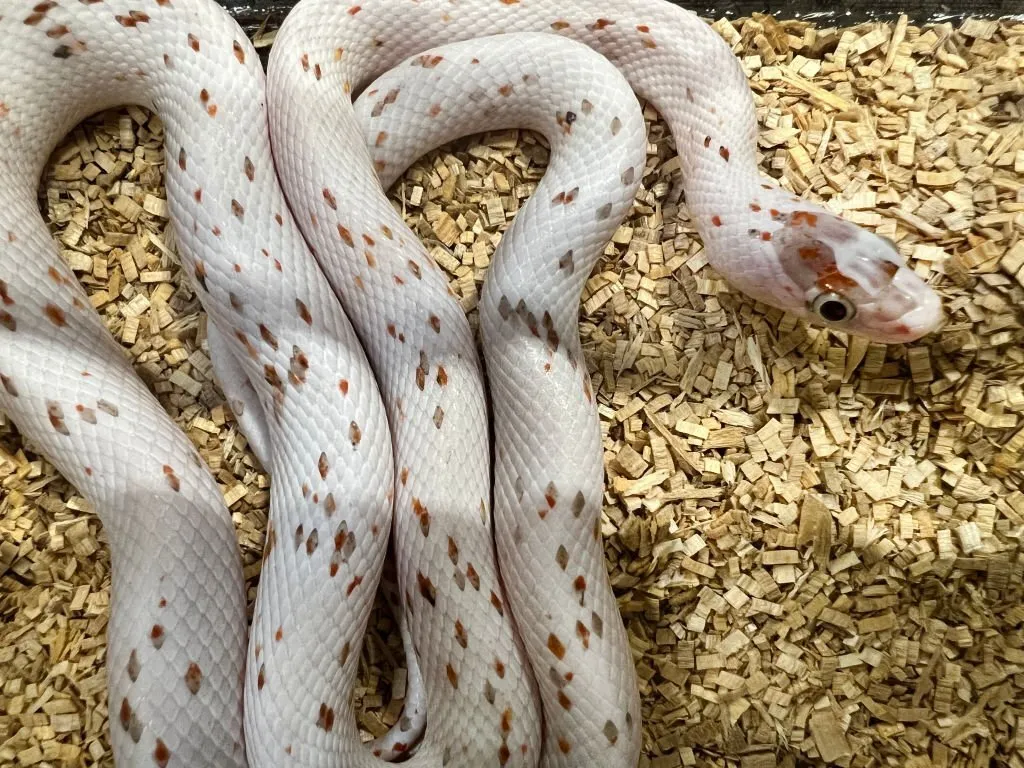
Quick Facts about Palmetto Corn Snake
| Characteristic | Description |
|---|---|
| Scientific name | Pantherophis guttatus |
| Common name | Palmetto corn snake |
| Size | 30 to 48 inches in length |
| Lifespan | 10 to 15 years in captivity |
| Diet | Mice, rats, and other small rodents |
| Habitat | Dry forests, woodlands, and palmetto flatwoods |
| Temperament | Generally docile and easy to handle |
| Distinguishing features | Mostly white body with random colored scales |
Care Requirements
Enclosure
Palmetto corn snakes need an adequately sized enclosure, at least 20 gallons long for an adult. The enclosure should be escape-proof with a secure lid. These snakes like to climb as well as burrow, so provide branches, vines, and hiding places. The ideal temperature range is 75°F to 85°F on the cool end and 88°F to 92°F on the warm end. Use an under-tank heating pad, ceramic heat emitter, or similar heat source to create a thermal gradient. Do not use hot rocks which can cause burns. Include a hygrometer to monitor humidity which should be 40% to 60%.
Substrate
Good substrate options include reptile bark, cypress mulch, or coconut fiber. Avoid sand, as it can cause impaction if ingested. Spot clean waste daily and change substrate completely every 1-2 months.
Hiding Places
Palmetto corn snakes like to squeeze into tight hiding spots to feel secure. Provide at least two snug hides, one on the cooler side and one on the warmer side. Hollow logs, cardboard boxes with holes cut in them or plastic reptile hides all work well. Ensure the hides are just big enough for the snake to fit inside.
Water
Fresh water should always be available in a sturdy bowl that cannot be tipped over easily. Change the water daily. Most corn snakes will soak in their water periodically. This aids with shedding their skin.
Food
In the wild, corn snakes eat small rodents and birds. In captivity, they can be fed pre-killed mice or rats that are no bigger than the widest part of the snake’s body. Hatchlings can start on pinky mice and then graduate to adult mice. Feed juveniles 1 mouse every 5-7 days and adult corn snakes one adult mouse weekly. It’s fine for them to skip a meal now and then. Always feed with tongs and never handle your snake after feeding until digestion is complete.
Check Post: lilac English bulldog
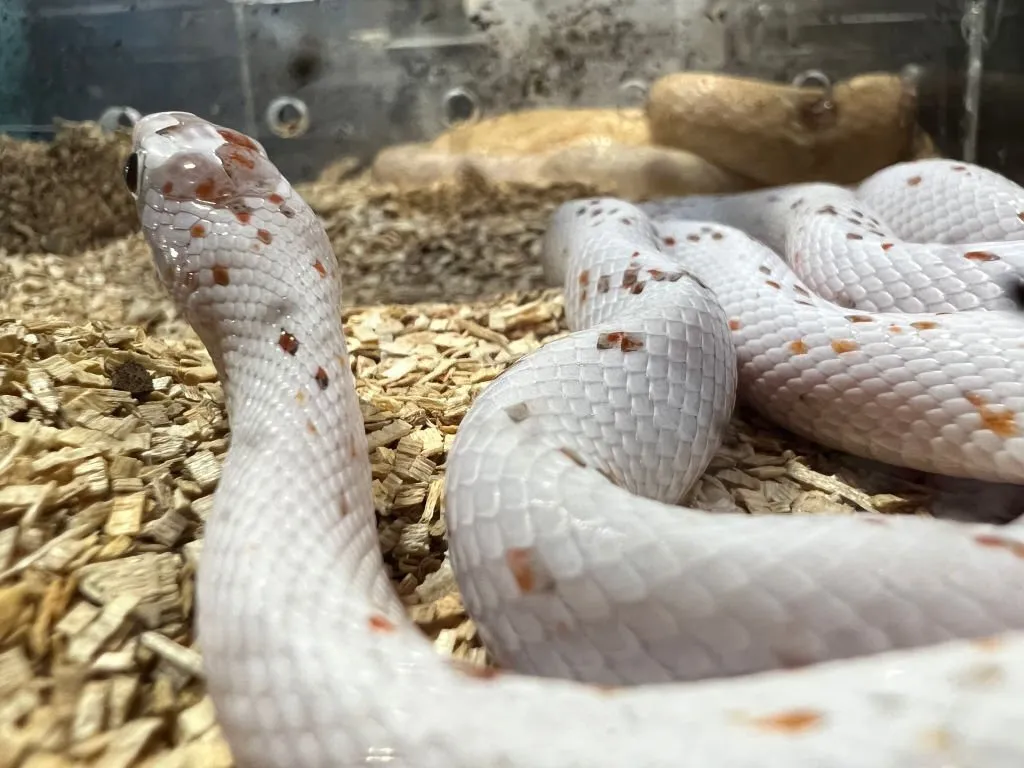
Diet Summary of Palmetto Corn Snake
| Characteristic | Description |
|---|---|
| Diet | Carnivorous |
| Prey items | Mice, rats, and other small rodents |
| Prey size | Prey items should be no wider than the widest part of the snake’s body |
| Feeding frequency | Adult snakes should be fed once a week, while juveniles should be fed more often, depending on their age and size |
| Feeding method | Prey items should be offered pre-killed or thawed frozen |
Behavior
Palmetto corn snakes are primarily crepuscular, meaning most active at dawn and dusk. They spend much of their time hidden away in burrows and hides. Docile in nature, they rarely bite once accustomed to handling. Allow 1-2 weeks for a new snake to settle into their enclosure before attempting to handle them. Always support their body fully when picking them up. Limit handling to 15-20 minutes at a time. Never grab their tail as this can injure them. If a corn snake feels threatened, it may vibrate their tail rapidly as a warning sign before striking.
Shedding
Like all snakes, Palmetto corn snakes shed their skin regularly as they grow. After a shed, the skin will look dull and opaque. Increase humidity to aid the shedding process. Shedding takes 1-2 weeks. Do not handle your snake when they are in shed mode, as their eyes will be cloudy for a few days. After shedding, the eyes clear and colors look bright again. Remove any unshed skin gently with a moist towel if needed.
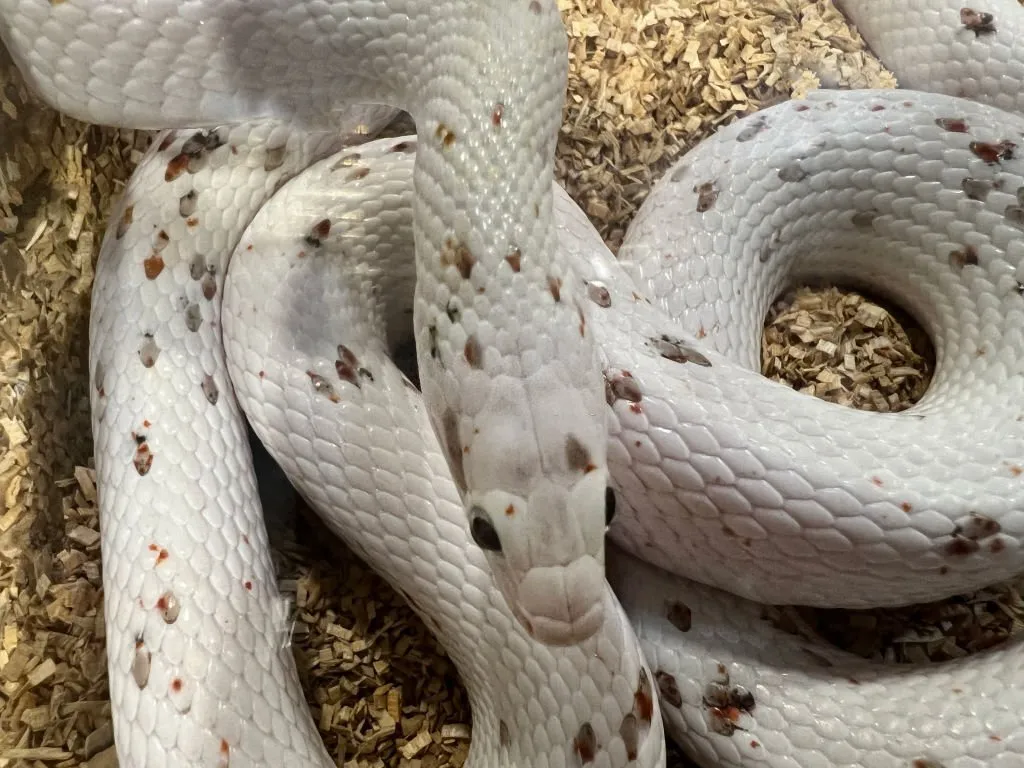
Breeding
Palmetto corn snakes reach breeding maturity around 18-24 months old. The breeding season is from late winter through spring. To stimulate mating behavior, make the enclosure cooler for 2 months then increase the temperature back up and introduce the snakes. Females release pheromones that get males interested. If receptive she will raise her tail.
The male will align his tail with hers and insert one of his hemipenes. Copulation may last over an hour. Females ovulate after breeding and will show a bulging midsection full of eggs. Provide a laying box filled with damp sphagnum moss. After about 4 weeks she will lay 10-20 eggs which are soft and leathery. Remove the eggs promptly for incubation.
Incubation
Place the eggs in a plastic container with ventilation holes and substrate designed for egg incubation, kept at 80-85°F. Humidity should be high around 80-90%. After 50-60 days, the eggs will hatch! Do not assist hatchlings emerge unless egg mating is stuck on them. The baby snakes will immediately shed their egg skin and be ready to feed shortly after.
Hatchlings
Hatchling Palmetto corn snakes are about 8-12 inches long. They can eat small pinky mice. The cage size for a juvenile corn snake should be at least 10 gallons. Monitor humidity carefully as hatchlings are prone to issues with shedding. With routine care and proper nutrition, these snakes can live up to 23 years in captivity.
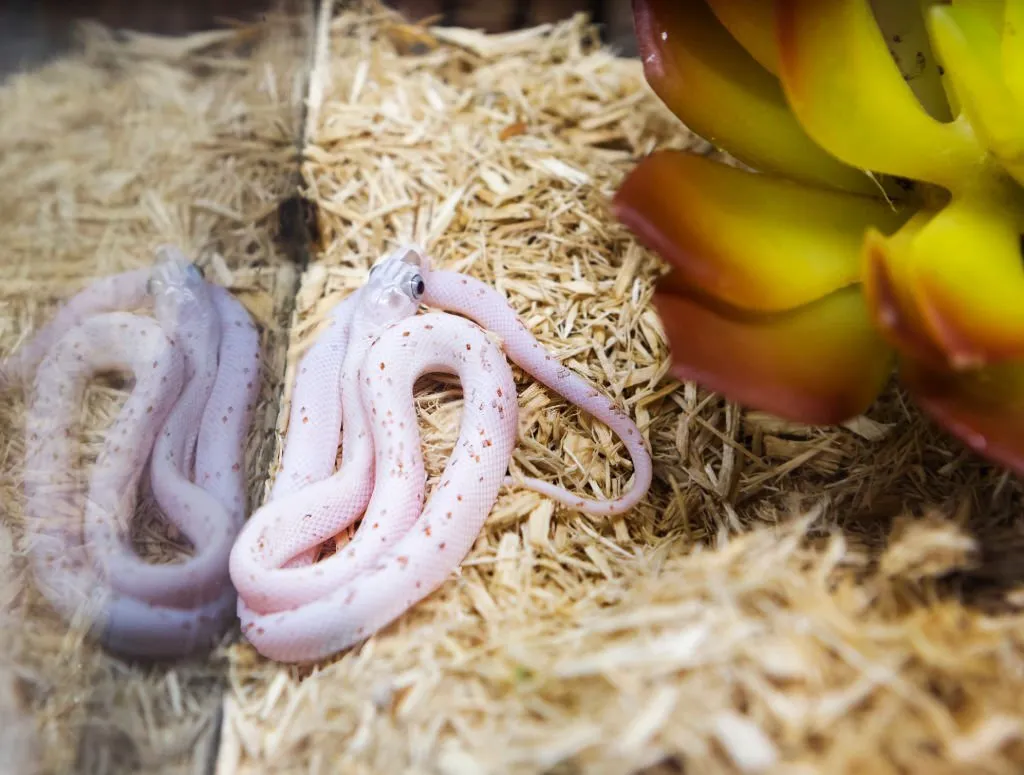
Costs
In the reptile trade, Palmetto corn snakes usually cost between $50-$150 depending on age and color morph. The enclosure, heating elements, substrate, and hides will be an additional cost upfront. Ongoing you can expect to spend $20-30 monthly for mice and other supplies. Veterinary care is seldom needed but should be provided if health issues arise. Get more information about Reptiles.
Care Guide Summary
- Docile nature
- Social
- Easy care
- Requires proper handling
- Temperature-sensitive
- Specialized diet
Final Thought
With their mild temperament, modest care needs, and wide range of beautiful color patterns, the Palmetto corn snake makes an ideal pet reptile. When provided with a properly heated vivarium, hides, fresh water, and regular feedings, these snakes will thrive in captivity. Their small size makes them suitable for keepers of all ages and experience levels. For an interesting, low-maintenance snake that is a joy to handle, the Palmetto corn snake fits the bill!
FAQs
What is the lifespan of a Palmetto corn?
Palmetto corn snakes can live 15-23 years with proper care and nutrition.
Do Palmetto corn snakes bite?
While any snake may bite if frightened, Palmetto corn snakes are typically docile. With gentle handling from a young age, bites are uncommon.
How big does a Palmetto corn get?
Palmetto corn snakes reach an adult size of 2-4 feet long. Females are slightly larger than males.
Can you handle a Palmetto corn?
Yes, with proper handling techniques, Palmetto corn snakes do very well with human interaction. Limit handling sessions to 15-20 minutes though.
Can Palmetto corn be housed together?
No, corn snakes should always be housed individually as they are solitary reptiles. Housing together risks combat and food competition.

